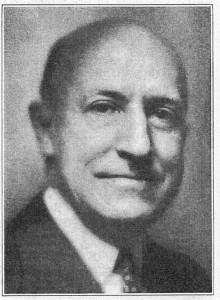
The output of new works from Guilbert & Betelle plummeted in the 1930s, as the Depression caused a suspension of school infrastructure programs. The firm layed off most of the staff, which numbered over 200 just a few years earlier.
Reduced to minor, low profile jobs—building service upgrades, interior renovations—James Betelle had little need to personally involve himself with the daily operation of his firm. He went to the office infrequently, spending his time at home or traveling with his wife, having recently married in 1932. By the mid 30s, the architects in the office rarely saw the man.
Sometime in 1936, a commission for a large school addition came in. Betelle was energized by the proposal, seeing it as a sign of economic turnaround for his business and the nation as a whole (in 1933 he wrote an article for Architectural Record, We Must Build Schools, calling for local governments to persuade just this sort of project.)
One day while the few remaining staffers were working on sketches, Betelle suddenly appeared at the office. The master architect strode to the drafting table and looked over the progress of this most important design. The future of his firm’s viability could hinge on it; there was no room for errors and slipshod work.
Betelle immediately identified problems. With the confidence that his 25 years of experience granted, he announced he would sit down at his own table and completely redo the design. The other architects were stunned by the audacity, but deferred to the man who’s name, after all, was on their letterhead.
Betelle scribbled passionately for nearly an hour. Once satisfied with his work, he called the men over and proudly shared the improved plans. One architect glanced over them for a few moments and asked, “Mr. Betelle, where are the bathrooms?”
At that, Betelle, infuriated, threw down his pencil and stormed out of the office. He would never return.
![]()
I was told this story by the 80 year-old son of Guilbert & Betelle’s specifications writer, Charles A. Krahmer. As a second-hand account the specifics are vague, but even without my embellishments it speaks volumes to Betelle’s state-of-mind as the economic conditions of the mid 1930s ate away at his business and personal life.
In 1937 Krahmer formed a partnership with G&B associate Grant AC Behee. Behee & Krahmer designed additions for Betelle’s Columbia High School and Jefferson School.
